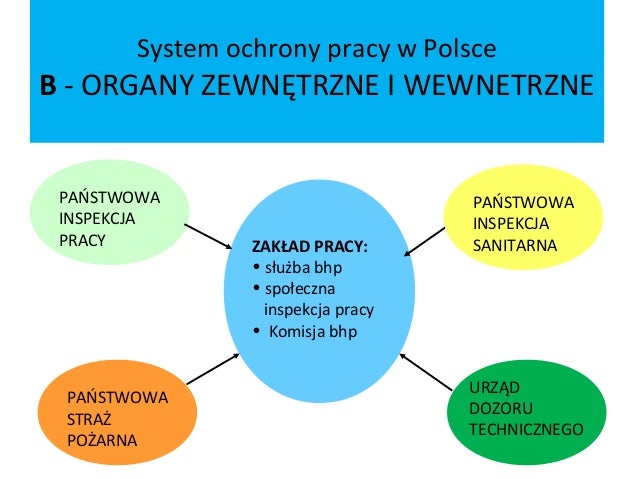The Centralny Instytut Ochrony Pracy – Państwowy Instytut Badawczy (CIOP-PIB), or the Central Institute for Labour Protection – National Research Institute in Warsaw, is a key institution in Poland. It focuses on improving working conditions and promoting occupational safety and health.
Let's explore what this institute does and why it's important.
What is CIOP-PIB?
CIOP-PIB is a research and development institution. Its primary mission involves scientific research. They also conduct development work related to occupational safety and health. It serves as a national research institute, meaning it plays a crucial role in shaping policies and practices related to workplace safety across Poland.
Think of it as a central hub. It gathers knowledge, conducts experiments, and develops solutions. These help make workplaces safer and healthier for everyone. The institute’s findings inform regulations and practical guidelines.
History in Brief
CIOP-PIB was established in 1950. Initially, its focus was on addressing immediate post-war industrial safety concerns. Over the decades, its scope has broadened. It now encompasses a wide array of occupational safety and health issues. The institute has adapted to evolving workplace environments and technological advancements.
From its early days, it has collaborated with other institutions. They also cooperate with international organizations to share knowledge and best practices. This allows them to stay at the forefront of occupational safety and health research.
CIOP-PIB's Activities and Research Areas
The institute's activities are diverse. They span several key areas. These areas aim to comprehensively improve working conditions. They provide assistance to companies in identifying and mitigating risks.
Research and Development: At the heart of CIOP-PIB's work is research. It involves studying various aspects of workplace safety. This includes physical, chemical, and psychosocial hazards. They develop new technologies and methods for risk assessment and prevention. For example, they might research the effectiveness of new protective equipment. They could also develop software to simulate hazardous work environments.
Standardization and Certification: CIOP-PIB participates in the development of national and European standards. They certify products and equipment related to occupational safety. This ensures that products meet specific safety requirements. A company manufacturing safety helmets might seek CIOP-PIB certification. This proves that their helmets meet the necessary safety standards. This helps promote the quality and reliability of safety equipment on the market.
Training and Education: The institute provides training programs. They cover a wide range of topics related to occupational safety and health. These programs are designed for employers, employees, and safety professionals. CIOP-PIB aims to raise awareness and improve knowledge about workplace hazards and preventive measures. For instance, they might offer courses on ergonomics, chemical safety, or risk assessment techniques. They empower individuals to create safer workplaces.
Consulting and Expertise: CIOP-PIB offers consulting services to companies. They provide expert advice on improving their occupational safety and health management systems. This includes conducting risk assessments, developing safety procedures, and implementing preventive measures. A construction company might seek CIOP-PIB's assistance. This helps them identify and mitigate risks at a construction site. They receive support in developing a comprehensive safety plan.
Information and Dissemination: The institute publishes scientific articles, reports, and guidelines. These disseminate knowledge and best practices related to occupational safety and health. They organize conferences, seminars, and workshops. This enables stakeholders to exchange information and learn about the latest developments in the field. CIOP-PIB's website serves as a valuable resource. It provides access to a wealth of information on various occupational safety and health topics.
Examples of CIOP-PIB's Impact
CIOP-PIB has contributed to numerous advancements in workplace safety. Here are some examples.
Development of Ergonomic Guidelines: The institute has developed ergonomic guidelines for various industries. They help reduce the risk of musculoskeletal disorders among workers. These guidelines provide recommendations on workstation design, lifting techniques, and other factors. They improve worker comfort and reduce the risk of injuries. For example, CIOP-PIB has developed guidelines for office workers. These help them set up their workstations in a way that minimizes strain on their backs and necks.
Research on Noise Reduction: CIOP-PIB has conducted research on noise reduction techniques. These are designed to protect workers from hearing loss in noisy environments. They develop noise control measures. They promote the use of hearing protection devices. They help reduce noise levels in workplaces. For instance, they have studied the effectiveness of different types of earplugs. They have also developed strategies for reducing noise from machinery.
Development of Protective Equipment: The institute has been involved in the development and testing of protective equipment. This equipment helps to protect workers from various hazards. These include respirators, safety helmets, and protective clothing. CIOP-PIB ensures that these products meet the required safety standards. They work closely with manufacturers to improve the design and performance of protective equipment. This makes workplaces safer.
Why is CIOP-PIB Important?
CIOP-PIB plays a vital role. It promotes a culture of safety and health in Poland. Its work helps prevent workplace accidents and illnesses. It improves the overall well-being of workers. The institute's research and development efforts lead to safer technologies and practices. They enhance productivity and reduce costs associated with workplace injuries.
By providing training, consulting, and information, CIOP-PIB empowers organizations. They develop and implement effective occupational safety and health management systems. The institute's contributions help ensure that Polish workplaces are safe. This protects workers and supports a healthy and productive workforce.
In conclusion, the Centralny Instytut Ochrony Pracy – Państwowy Instytut Badawczy is a cornerstone of occupational safety and health in Poland. It continuously strives to improve working conditions. It also ensures a safer and healthier future for all Polish workers.

